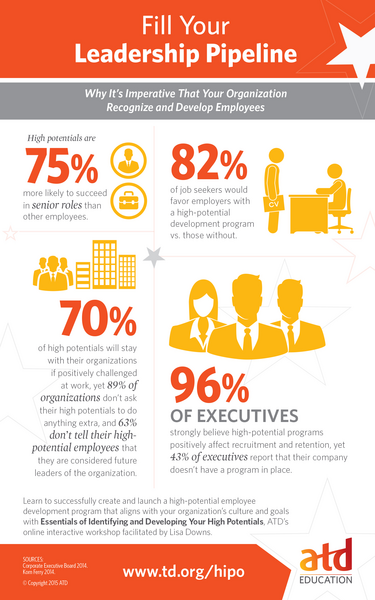ATD Blog
Rewards and Risks of Developing High-Potential Employees: Q&A With Lisa Downs
Thu Jan 07 2016

In this Q&A Podcast I speak with Lisa Downs, owner of DevelopmentWise Consulting in Redmond, Washington, which specializes in leadership coaching and consulting. She also facilitates Essentials of Identifying and Developing High-Potential Employees, part of ATD Education’s Essentials series.
Focusing on technical (STEM) professionals, Lisa Downs works with individuals and organizations to ensure they have the leadership and team performance solutions they need to be successful. She has worked as a learning professional for EMC², The Boeing Company, PEMCO Mutual Insurance, and T-Mobile USA, and spent six years in the accounting industry.
To start, I asked Lisa to offer her definition of “high-potential employees.” Not surprisingly, she finds that these are an organization’s star performers—those employees who meet their goals year after year. However, she is quick to note that high performers aren’t always high potentials. Some high performers are content to stay in their role and dig deep into their expertise, whereas high potentials have a desire to lead.
It’s important to develop these high potentials because they will be leading the organization at some point. In developing this star talent, organizations need to not only build skills, but also demonstrate how it values these employees and make them aware of the value they bring to their teams and the organization. More importantly, if you don’t invest in developing them, they may walk out the door.
We also briefly discussed the importance of transparency in an organizations programs to develop high potentials, something she covers in the Essentials program. She explains that transparency will depend on the culture of the organization. Each company will need to weigh whether broadcasting their high potentials improves issues like employee attrition and engagement or demotivates others. A lot, she says, depends on the current maturity of the leadership structure.
Finally, we discuss some of the risks with developing high potentials. Obviously, there will be some employees excluded from these leadership programs. It’s critical, therefore, for organizations to have other programs for other populations. Everyone likely needs some sort of development, and that needs to be made clear to the workforce.
For more advice and insight on how to identify and develop high potential employees, listen to the complete Q&A Podcast. Or you can join Lisa for Essentials of Identifying and Developing High-Potential Employees.
You've Reached ATD Member-only Content
Become an ATD member to continue
Already a member?Sign In
